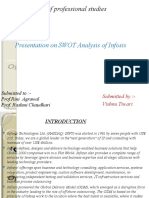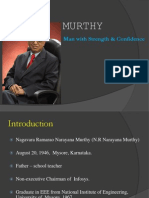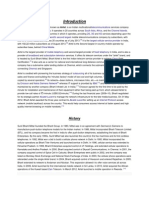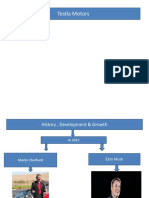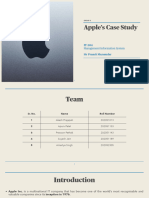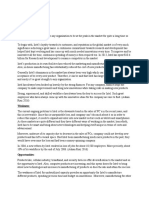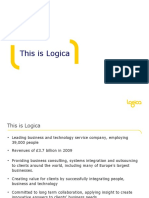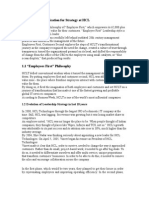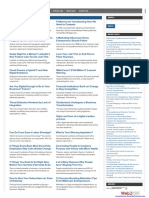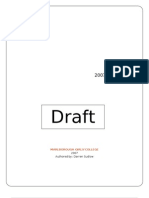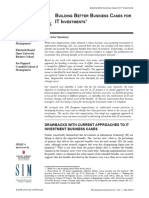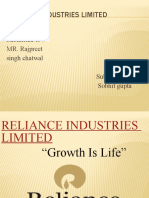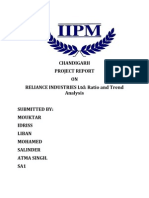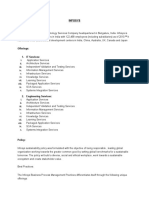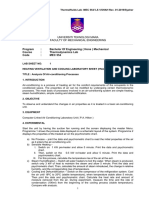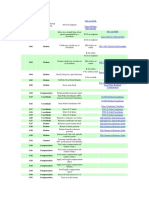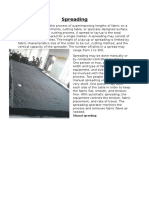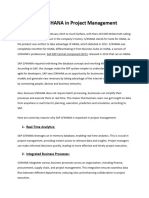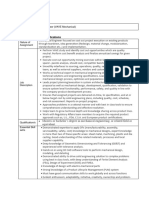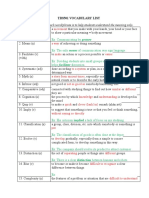Business Economics
Case Study
On
Infosys
SUBMITTED BY:
Rakshit Jhunjhunwala - 111
MBA (Tech.) IT
�Table of Contents
Introduction..........................................................3
History...................................................................4
Where They Stand?...............................................6
Strengths...............................................................7
Weaknesses..........................................................7
Opportunities........................................................8
Threats..................................................................9
References..........................................................10
Page
2
�Introduction
Infosys Technologies Limited is an Information Technology services company
headquartered in Bangalore, India. It is one of the largest IT companies in India. Infosys and
its subsidiaries have 114,822 employees as on June 30, 2010. Infosys has a global
footprint with 63 offices in 22 countries and development centers in India, China, Australia,
Canada, Japan, Poland, the UK and the Czech Republic,
Infosys defines, designs and delivers technology-enabled business solution. It also provides a
complete range of services by leverage its domain, business proficiency and strategic
alliances with leading technology providers.
The company offers business and technology consulting, systems integration, application
services, custom software development, product engineering, maintenance, re-engineering,
independent testing and validation services, IT infrastructure services and business process
outsourcing. It serves clients in banking, insurance and capital markets; communications,
media and entertainment; energy, utilities and services; healthcare and life sciences;
manufacturing; retail, consumer product goods and logistics; and other industries. It also
provides software products to the banking industry, through its Finacle suite of universal
banking solution. The company primarily operates in North America and Europe.
Infosys pioneered the Global Delivery Model (GDM), which emerged as a disruptive force in
the industry leading to the rise of offshore outsourcing. The GDM is based on the principle
of taking work to the location where the best talent is available, where it makes the best
economic sense, with the least amount of acceptable risk.
Page
3
�History
Infosys was set up on 2 July 1981 by seven entrepreneurs, N R Narayana Murthy, K
Dinesh, S. D. Shibulal, Kris Gopalakrishnan, Nandan Nilekani, and Ashok Arora with N. S.
Raghavan authoritatively being the foremost employee of the company. Founders began the
company with an initial investment of INR 10,000. The company was incorporated as
"Infosys Consultants Pvt Ltd." in Model Colony, Pune as the registered office.
Infosys headquarters in Bangalore, India
The company opened its first international office in USA in 1987. Infosys went public in
1993. Interestingly, Infosys IPO (Initial Public Offer) was under subscribed but it was bailed
out by US investment banker Morgan Stanley which picked up 13% of equity at the offer
price of Rs. 95 per share. By 1995 the firm was worth $200 million, had 900 employees
and annual revenue of $20 million. The share price gushed to Rs. 8,100 by 1999. By the year
2000 Infosys' shares touched Rs. 15,600 before the disastrous incident of 9/11, changed all
that. In 2004 it crossed $1 billion in revenue. In 2006 its revenue crossed $2 billion and it
completed 25 years.
According to Forbes magazine, since listing on the BSE till the year 2000, Infosys' sales and
earnings compounded at more than 70% a year. In the year 2000, President of the United
Page
4
�States Bill Clinton praised India on its achievements in high technology areas citing the
example of Infosys.
In 2001, it was rated Best Employer in India by Business Today. Infosys was rated best
employer to work for in 2000, 2001, and 2002 by Hewitt Associates. In 2007, Infosys
received over 1.3 million applications and hired fewer than 3% of applicants.
Infosys won the Global MAKE (Most Admired Knowledge Enterprises) award, for the years
2003, 2004 and 2005, being the lone Indian company to win this award and is inducted into
the Global Hall of Fame for the same.
In 2010, reports were issued about the growing resentment among Infosys employees on
the internal company policies.
Page
5
�Where They Stand?
Competition
Last Price Market Cap. Sales Net Profit Total Assets
(2nd Aug ‘10) (Rs. cr.) Turnover (31st Mar ’10) (31st Mar ’10)
(2nd Aug ‘10) (31st Mar ’10)
TCS 838.30 164,073.84 23,044.45 5,618.51 15,152.36
Infosys 2,796.95 160,517.27 21,140.00 5,803.00 22,036.00
Wipro 413.75 101,348.06 23,177.60 4,898.00 23,222.40
HCL Tech 392.85 26,666.02 5,078.76 1,056.58 4,001.97
Oracle Financ 2,136.25 17,916.95 2,212.62 695.71 3,509.43
Mphasis 599.45 12,579.71 3,405.02 836.87 2,151.30
Mahindra Satyam 86.85 10,216.53 8,137.28 1,715.74 7,381.31
Tech Mahindra 702.55 8,716.43 4,483.76 742.85 5,001.60
Patni Computer 463.65 6,022.42 1,751.33 542.73 3,204.71
Financial Tech 1,237.15 5,700.61 356.36 368.60 2,175.54
The company recorded revenues of $4,663 million during the financial year ended March
2009 (FY2009), an increase of 11.7% over 2008. The increase in revenues was due to growth
in business from existing clients, mainly in industries such as manufacturing and retail. The
operating profit of the company was $1,374 million in FY2009, an increase of 18.6% over
2008. Its net profit was $1,281 million in FY2009, an increase of 10.1% over 2008.
Page
6
�Strengths
Since the company is based in India its competitive advantage is enhanced. The
Indian economy, regardless of weak economic indicators such as comparatively high
rates of inflation, has low labor costs. The workforce has comparatively high skills
levels in Information Technology. Pair these two elements together and you have an
operational basis that offers low-cost based, highly skilled competitive advantage.
Trained Indian personnel many a times speak very good English and are sensitive to
Western culture, underpinned by India's colonial past.
Infosys is in a robust financial position. The business turned over more than $4 billion
in 2008. This means that it has the capital to expand, and also the basis to leverage
potential investors.
The company has bases in 63 global development centres, most of which are located
in India, although the company has offices in many developed and developing
nations. This means not only that Infosys is becoming a global brand but also that it
has the potential to support the global operations of multinational clients.
Infosys has a highly competent management team that is capable of envisioning
future trends in the industry. Its solid depth of experience gives the company a clear
competitive advantage over its peers. The company has also set best standards in
corporate disclosure and human resource management. Considering the knowledge-
intensive nature of the software industry, the ability to attract and retain the right
talent gives Infosys an edge over other companies from and outside the software
industry.
Weaknesses
Infosys on occasion struggles in the US markets, and has particular problems in
securing United States Federal Government contracts in North America. Since these
contracts are highly profitable and are likely to run for long periods of time, Infosys is
Page
7
� losing out on profitable business. Adding to this is the truth that its competitors do
well in terms of securing the same Federal business (also taking into account that
many of its competitors are domiciled in the US and there could be political pressure
on the US Government to award contracts to these organizations).
Despite being a big IT company in relation to its Indian competitors, Infosys is much
smaller than its global competitors. As discussed above, Infosys generated $4 billion
in 2008, which is comparatively low in contrast with huge global competitors like
Hewlett-Packard ($91 billion), IBM ($91 billion), EDS ($21 billion) and Accenture ($18
billion).
At times it is argued that Infosys is weaker when it comes to high-end management
consultancy, since it tends to work at the level of operational value creation.
Competitors such as IBM and Accenture tend to dominate this area.
Opportunities
At a time of recession in the global economy, it may appear that some companies
will lessen taking up of services that Infosys offers. However, in hard times clients
tend to focus upon cost reduction and outsourcing - which are strategies that Infosys
offers. So rough times could be lucrative for Infosys.
There is a new and emerging market in China as the country undergoes a huge
industrial revolution.
The strategic alliance between Infosys and Schlumberger gives the IT company
access to profitable business in the gas and oil industries.
There has been a trend over recent years for European and North American
companies to base some or all of their operation in India called an offshore service.
Essentially there is a seamless link between domestic operations and services hosted
in India.
The global IT industry is witnessing a turnaround in demand. The companies in US
have started to witness stronger cash flows and are now opening up their purse
strings to spend on IT. The current quarter has seen a surge in volumes of leading
Indian IT companies as demand for IT services from the US has revived. IT giants like
Infosys are already seeing robust deal pipelines and faster decision making from
Page
8
� clients. Europe has been a cause of concern but key players like Infosys are investing
in Europe to capture the advantage when the conditions improve.
Threats
India is not the lone country that is undergoing rapid industrial development.
Competitors may come from countries such as China or Korea where there are big
pools of low-cost labor, and developing educational infrastructures such as
universities and technology colleges.
Customers may switch to other offshore service companies in other countries such
as China or Korea.
Other global companies have realized that India has the advantage of low-cost,
highly-skilled labor that often speaks English and is culturally sensitive to Western
practices. Infosys has to compete for skilled labor and this may have the effect of
increasing wage levels, and making it more difficult to recruit and retain staff.
The dollar is expected to get hit under the weight of US huge deficits. The rupee is
expected to appreciate in the medium term. In the long term, the dollar could
weaken as the world starts focusing on the currency’s intrinsic weakness. In addition
to this the recent crisis in Europe has weakened the Euro as well. This would
certainly be a negative for Indian exporter companies like Infosys. While the
company is taking steps to evade its currency risk, the fact is that it is still, to a large
extent, dependent on the US dollar and the Euro. This makes it vulnerable to rupee’s
volatile movement against these currencies.
Page
9
�References
http://www.infosys.com/
http://en.wikipedia.org/wiki/Infosys
http://www.marketingteacher.com/swot/infosys-swot.html
http://www.moneycontrol.com/competition/infosystechnologies/comparison/IT
http://www.blurtit.com/q443802.html
Page
10



